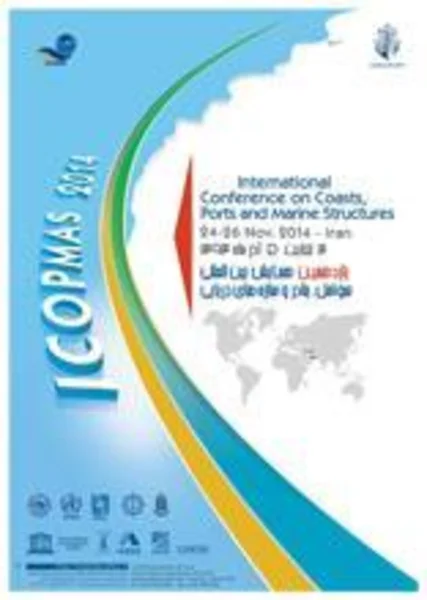-
(environmental monitoring of intertidal coasts of khark island using bivalvia distribution (pollution indicator
جزئیات بیشتر مقاله- تاریخ ارائه: 1387/01/01
- تاریخ انتشار در تی پی بین: 1387/01/01
- تعداد بازدید: 831
- تعداد پرسش و پاسخ ها: 0
- شماره تماس دبیرخانه رویداد: -
with their high geographical distribution in seas and lakes, bivalvia are the second most various of mollusks. they are considered among the best indicators of the environmental monitoring assessment in the seas in regard with the toxic substances and greatly help researchers and monitoring in assessing the oil and chemical pollutants of an area. moreover, variety and distribution of indigenous species and changes in the quality, quantity or even presence or absence of alien species are effective factors in interpreting the pollution (hossein zadeh, 2000). despite the negative impacts of oil activities on coastal ecosystems and biodiversity of aquatic species, expansion of maritime transportation in the world has led to transfer of many aquatic species to alien environments. such transfer is mainly conducted by ships and oil tankers that take up large volumes of water to maintain the vessel’s stability after they have delivered their oil or cargo to the port of destination and discharge it later on to load cargo, which would raise the risk if the transferred species are able to adapt to the ecological and biological conditions of the new environment. the aquatic species in their larva or adolescent periods will be able to survive in a new environment if they can biologically and ecologically adapt themselves, and they are not threatened by their natural enemies (emam, 2006). the environmental monitoring of the intertidal areas on the beaches of the khark island was conducted with identification and determination of the distribution of the bivalvia through sampling in four seasons for a period of one year. the monitoring was done in a northern (northwest to northeast) area 5.5 kilometers long and 35 meters wide in three transects with the average distance of 1.5 kilometers, and a southern (southeast to southwest) area 3 kilometers long and 80 meters wide in 2 transects. the sampling was done in the first month of each season at the highest tide using a 30*30*30 cm quadrate. the species mainly lived on sand, gravel and rock beds. the species in the south had higher distribution and diversity, due to the accumulation of oily wastes and chemicals resulting from the petrochemical industries in the area.
حوزه های تحت پوشش رویداد
مقالات جدیدترین رویدادها
-
استفاده از تحلیل اهمیت-عملکرد در ارائه الگوی مدیریت خلاقیت سازمانی و ارائه راهکار جهت بهبود
-
بررسی تاثیر ارزش وجوه نقد مازاد بر ساختار سرمایه شرکت های پذیرفته شده در بورس اوراق بهادار تهران
-
بررسی تأثیر سطح افشای ریسک بر قرارداد بدهی شرکت های پذیرفته شده در بورس اوراق بهادار تهران
-
بررسی تأثیر رتبه بندی اعتباری مبتنی بر مدل امتیاز بازار نوظهور بر نقد شوندگی سهام با تأکید بر خصوصی سازی شرکت ها
-
تأثیر آمیخته بازاریابی پوشاک ایرانی بر تصویر ذهنی مشتری پوشاک ایرانی (هاکوپیان)
-
تعیین رابطه پره اکلامپسی با دی دایمر در زنان باردار
-
بررسی تاثیر ابعاد، موقعیت و شکل بازشوها بر رفتار سقف های دال بتی دوطرفه
-
بررسی تاثیر منابع معنوی بر عملکرد مالی سازمان با در نظر گرفتن اثر میانجی فرآیند و عملکرد هیات مدیره (مورد مطالعه: شرکت خدمات ارتباطی مخابراتی رایتل)
-
میزان انعکاس مسایل تربیت دینی در کتاب فارسی هفتم از منظر دبیران ادبیات فارسی دوره ی اول متوسطه دخترانه شهرستان مرند
-
effect of various nanoclay on the reological behavior of bitumen
مقالات جدیدترین ژورنال ها
-
مدیریت و بررسی افسردگی دانش آموزان دختر مقطع متوسطه دوم در دروان کرونا در شهرستان دزفول
-
مدیریت و بررسی خرد سیاسی در اندیشه ی فردوسی در ادب ایران
-
واکاوی و مدیریت توصیفی قلمدان(جاکلیدی)ضریح در موزه آستان قدس رضوی
-
بررسی تاثیر خلاقیت، دانش و انگیزه کارکنان بر پیشنهادات نوآورانه کارکنان ( مورد مطالعه: هتل های 3 و 4 ستاره استان کرمان)
-
بررسی تاثیر کیفیت سیستم های اطلاعاتی بر تصمیم گیری موفق در شرکتهای تولیدی استان اصفهان (مورد مطالعه: مدیران شرکتهای تولیدی استان اصفهان)
-
بررسی تاثیر وابستگی و تعهد به رابطه بر برون سپاری فعالیت های لجستیک مورد مطالعه: شهرداری آبیک قزوین
-
واکاوی منابع انسانی در زمینه افزایش انگیزه و کارآیی بهتر در سازمانهای دولتی
-
عوامل موثر در حسابرسی بر تجدید ارائه صورت های مالی شرکت های بورس اوراق بهادار تهران
-
بررسی رابطه بین شهرت حسابرس با مدیریت کفایت سرمایه بانک های پذیرفته شده در بورس اوراق بهادار تهران
-
توزیع بار اقتصادی با در نظر گرفتن آلودگی زیست محیطی در سیستم قدرت با استفاده از الگوریتم چند هدفه مبتنی بر معیار پارتو و منطق فازی




سوال خود را در مورد این مقاله مطرح نمایید :